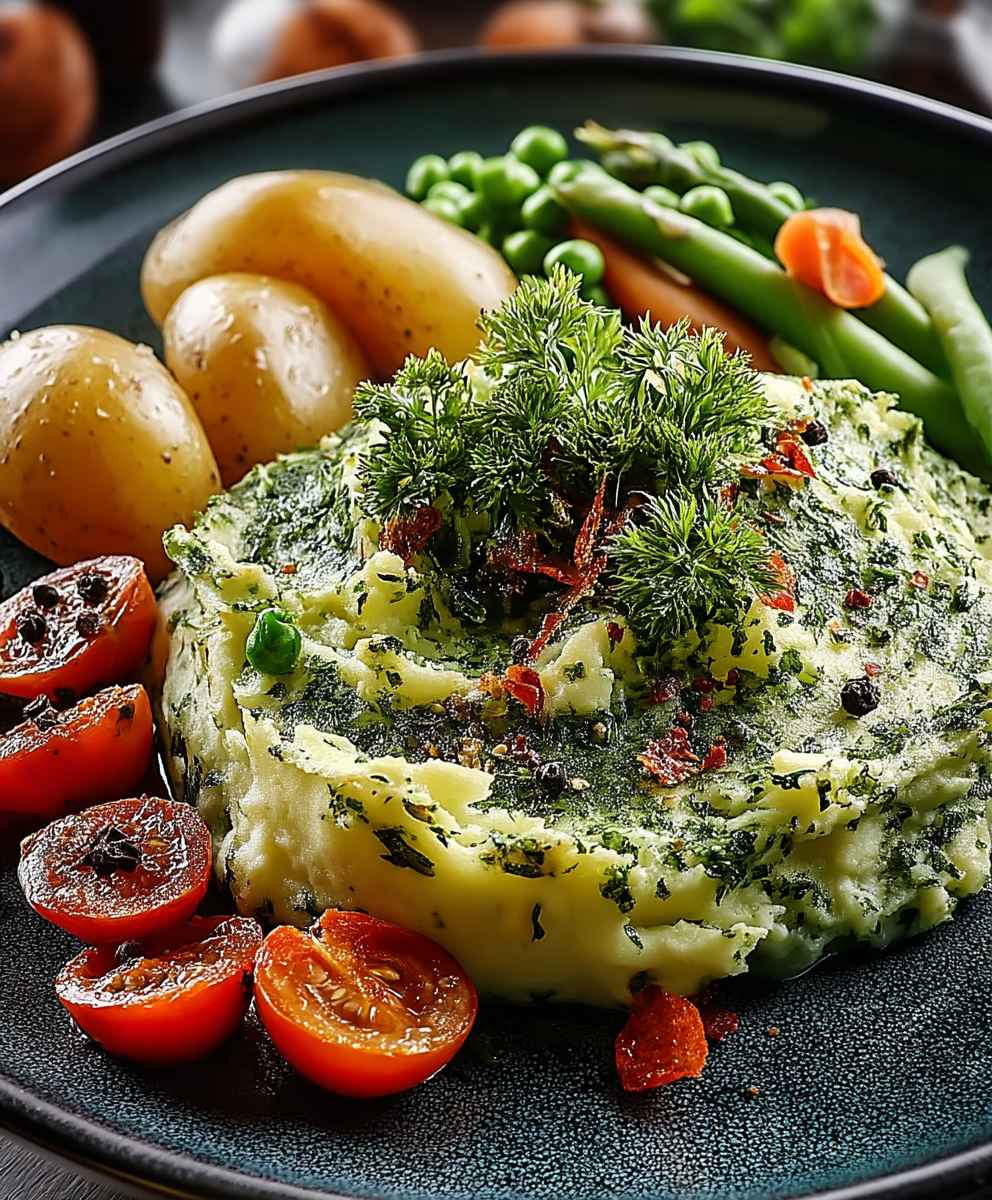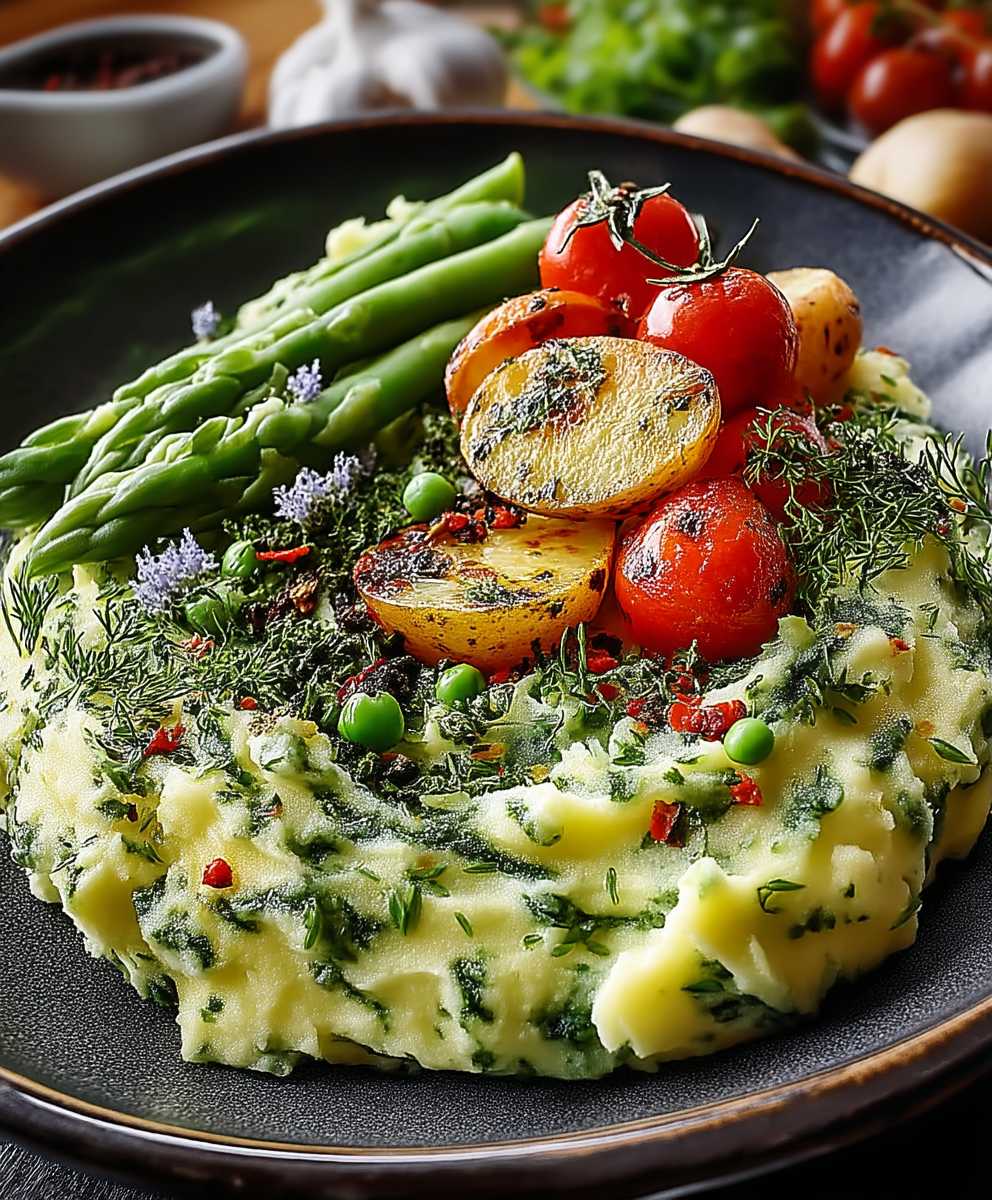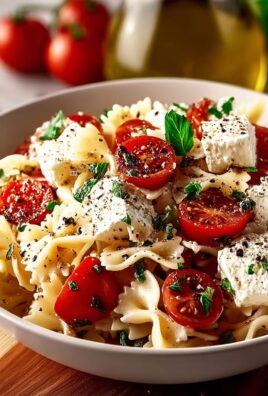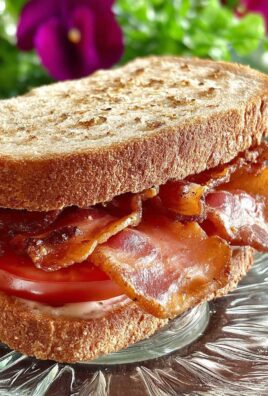Herb Mash Spring Vegetables: a symphony of fresh flavors that will transport you to a sun-drenched garden with every bite. Imagine tender, vibrant spring vegetables, perfectly cooked and then lovingly embraced by a creamy, fragrant herb mash. This isn’t just a side dish; it’s an experience!
The concept of mashing vegetables with herbs has roots stretching back centuries, a testament to resourceful cooks seeking to elevate simple ingredients. In many cultures, herbs were not just flavor enhancers but also valued for their medicinal properties, adding another layer of significance to these dishes. While the exact origins of this particular combination are difficult to pinpoint, the spirit of celebrating seasonal produce with fresh herbs is a timeless tradition.
What makes herb mash spring vegetables so irresistible? It’s the delightful contrast of textures the slight bite of the vegetables against the smooth, velvety mash. It’s the explosion of fresh, herbaceous flavors that dance on your palate. And let’s not forget the sheer convenience! This dish is surprisingly easy to prepare, making it perfect for weeknight dinners or elegant enough to grace your holiday table. People adore this dish because it’s a celebration of spring, a comforting yet sophisticated way to enjoy the season’s bounty. It’s a dish that nourishes both body and soul.
Ingredients:
- For the Herb Mash:
- 2 lbs Yukon Gold potatoes, peeled and quartered
- 1 cup heavy cream
- 1/2 cup unsalted butter, softened
- 1/4 cup fresh chives, finely chopped
- 1/4 cup fresh parsley, finely chopped
- 1/4 cup fresh dill, finely chopped
- 2 cloves garlic, minced
- Salt and freshly ground black pepper to taste
- For the Spring Vegetables:
- 1 lb asparagus, trimmed
- 1 lb sugar snap peas, trimmed
- 1 cup shelled fresh peas (or frozen, thawed)
- 1 bunch radishes, trimmed and halved or quartered if large
- 4 scallions, thinly sliced
- 2 tablespoons olive oil
- 1 tablespoon lemon juice
- 1 teaspoon lemon zest
- Salt and freshly ground black pepper to taste
- Optional: edible flowers for garnish
- Optional Protein (Choose one or more):
- 4 (6-ounce) salmon fillets, skin on or off
- 4 (6-ounce) chicken breasts, boneless and skinless
- 1 lb shrimp, peeled and deveined
- 1 block (14-16 oz) firm tofu, pressed
- Protein Marinade (if using):
- 2 tablespoons olive oil
- 1 tablespoon lemon juice
- 1 clove garlic, minced
- 1 teaspoon dried thyme
- Salt and freshly ground black pepper to taste
Preparing the Herb Mash
- Boil the Potatoes: Place the peeled and quartered potatoes in a large pot and cover with cold water. Add a generous pinch of salt to the water. Bring to a boil over high heat, then reduce heat to medium and simmer for 15-20 minutes, or until the potatoes are fork-tender. You should be able to easily pierce them with a fork.
- Drain and Dry: Once the potatoes are cooked, drain them thoroughly in a colander. Return the potatoes to the empty pot and place it back on the stovetop over low heat for a minute or two. This will help to dry out any excess moisture in the potatoes, resulting in a fluffier mash. Be careful not to burn them!
- Mash the Potatoes: Remove the pot from the heat. Using a potato masher or a ricer, mash the potatoes until smooth. If using a ricer, pass the potatoes through the ricer into the pot. This will create an incredibly smooth and lump-free mash.
- Add Cream and Butter: Add the softened butter and heavy cream to the mashed potatoes. Gently fold them in until they are fully incorporated and the mash is creamy and smooth. Don’t overmix, as this can make the potatoes gluey.
- Incorporate Herbs and Garlic: Add the minced garlic, chopped chives, parsley, and dill to the mashed potatoes. Gently fold them in until they are evenly distributed throughout the mash. The herbs will add a wonderful fresh flavor and aroma to the potatoes.
- Season to Taste: Season the herb mash with salt and freshly ground black pepper to taste. Start with a small amount and add more as needed, tasting as you go. Remember that the salt will enhance the flavors of the herbs and garlic.
- Keep Warm: Cover the pot and keep the herb mash warm until ready to serve. You can place it over a very low heat or in a warm oven (around 200°F) to prevent it from cooling down.
Preparing the Spring Vegetables
- Prepare the Vegetables: While the potatoes are cooking, prepare the spring vegetables. Trim the asparagus by snapping off the tough ends. Trim the sugar snap peas and remove any strings. If using fresh peas, shell them. Halve or quarter the radishes if they are large. Thinly slice the scallions.
- Blanch the Asparagus and Sugar Snap Peas (Optional): For a brighter green color and slightly more tender texture, you can blanch the asparagus and sugar snap peas. Bring a pot of salted water to a boil. Add the asparagus and cook for 1-2 minutes, until bright green. Remove with a slotted spoon and immediately plunge into a bowl of ice water to stop the cooking process. Repeat with the sugar snap peas. Drain the blanched vegetables and set aside. This step is optional, but it can enhance the appearance and texture of the vegetables.
- Sauté the Vegetables: Heat the olive oil in a large skillet or sauté pan over medium heat. Add the radishes and scallions and sauté for 2-3 minutes, until slightly softened.
- Add the Remaining Vegetables: Add the asparagus, sugar snap peas, and peas to the skillet. Sauté for another 3-5 minutes, until the vegetables are tender-crisp. Be careful not to overcook them, as they should still have a slight bite.
- Season and Finish: Stir in the lemon juice and lemon zest. Season with salt and freshly ground black pepper to taste. Toss to combine and ensure the vegetables are evenly coated with the lemon dressing.
- Keep Warm: Keep the spring vegetables warm until ready to serve. You can cover the skillet or transfer them to a warm serving dish.
Preparing the Optional Protein (Choose One or More)
Salmon Fillets
- Marinate (Optional): In a small bowl, whisk together the olive oil, lemon juice, minced garlic, dried thyme, salt, and pepper. Place the salmon fillets in a shallow dish and pour the marinade over them. Turn to coat evenly. Let marinate for at least 15 minutes, or up to 30 minutes in the refrigerator.
- Pan-Sear or Bake:
- Pan-Sear: Heat a tablespoon of olive oil in a skillet over medium-high heat. Place the salmon fillets skin-side down (if using skin-on fillets) in the skillet and sear for 4-5 minutes, until the skin is crispy and golden brown. Flip the fillets and cook for another 3-4 minutes, or until the salmon is cooked through and flakes easily with a fork.
- Bake: Preheat oven to 400°F (200°C). Place the salmon fillets on a baking sheet lined with parchment paper. Bake for 12-15 minutes, or until the salmon is cooked through and flakes easily with a fork.
- Rest: Let the salmon fillets rest for a few minutes before serving.
Chicken Breasts
- Marinate (Optional): In a small bowl, whisk together the olive oil, lemon juice, minced garlic, dried thyme, salt, and pepper. Place the chicken breasts in a shallow dish and pour the marinade over them. Turn to coat evenly. Let marinate for at least 30 minutes, or up to several hours in the refrigerator.
- Pan-Sear or Bake:
- Pan-Sear: Heat a tablespoon of olive oil in a skillet over medium-high heat. Place the chicken breasts in the skillet and sear for 5-7 minutes per side, until golden brown and cooked through. Use a meat thermometer to ensure the internal temperature reaches 165°F (74°C).
- Bake: Preheat oven to 375°F (190°C). Place the chicken breasts on a baking sheet lined with parchment paper. Bake for 20-25 minutes, or until the chicken is cooked through and the internal temperature reaches 165°F (74°C).
- Rest: Let the chicken breasts rest for a few minutes before slicing and serving.
Shrimp
- Marinate (Optional): In a small bowl, whisk together the olive oil, lemon juice, minced garlic, dried thyme, salt, and pepper. Place the shrimp in a bowl and pour the marinade over them. Toss to coat evenly. Let marinate for at least 15 minutes, or up to 30 minutes in the refrigerator.
- Sauté: Heat a tablespoon of olive oil in a skillet over medium heat. Add the shrimp and sauté for 2-3 minutes per side, until pink and cooked through. Be careful not to overcook the shrimp, as they can become rubbery.
Tofu
- Press the Tofu: Press the tofu to remove excess water. Wrap the tofu in paper towels and place a heavy object on top for at least

Conclusion:
This Herb Mash Spring Vegetables recipe isn’t just another side dish; it’s a celebration of spring flavors, a symphony of textures, and a guaranteed crowd-pleaser. I truly believe you’ll find yourself making this again and again, not just during spring, but any time you crave a vibrant and comforting meal. The creamy, herb-infused mash perfectly complements the crisp-tender vegetables, creating a harmonious balance that will tantalize your taste buds.
Why is this a must-try? Because it’s incredibly easy to make, requiring minimal effort for maximum flavor payoff. It’s also versatile! You can easily adapt it to your own preferences and dietary needs. Don’t have asparagus on hand? Substitute with green beans or broccoli. Want to add a little protein? Toss in some grilled chicken or shrimp. The possibilities are endless!
Serving Suggestions and Variations:
Think of this Herb Mash Spring Vegetables as a blank canvas for your culinary creativity. Here are a few ideas to get you started:
* As a Side Dish: Serve alongside roasted chicken, grilled salmon, or a hearty steak. The vibrant colors and fresh flavors will brighten up any main course.
* As a Vegetarian Main Course: Add a poached egg on top for a protein boost and a touch of richness. A sprinkle of toasted nuts or seeds will add a delightful crunch.
* As a Base for Bowls: Layer the herb mash and vegetables in a bowl with your favorite grains, such as quinoa or brown rice. Top with a dollop of Greek yogurt or a drizzle of tahini dressing.
* Variations: Experiment with different herbs in the mash. Try adding dill, parsley, or chives for a unique flavor profile. You can also roast the vegetables instead of steaming them for a deeper, more caramelized flavor. For a richer mash, use heavy cream instead of milk. If you’re dairy-free, almond milk or coconut milk work beautifully. Consider adding a squeeze of lemon juice to brighten the flavors even further. A sprinkle of red pepper flakes can add a touch of heat.I’m confident that this recipe will become a staple in your kitchen. It’s the perfect way to showcase the bounty of spring and impress your friends and family with your culinary skills. The combination of creamy, earthy, and fresh flavors is simply irresistible.
So, what are you waiting for? Gather your ingredients, put on your apron, and get ready to create a culinary masterpiece. I can’t wait to hear about your experience with this Herb Mash Spring Vegetables recipe! Please, share your photos and feedback in the comments below. Let me know what variations you tried and how you made it your own. Happy cooking! I hope you enjoy this recipe as much as I do. Don’t forget to rate the recipe if you loved it! Your feedback helps me create even more delicious and easy-to-follow recipes for you to enjoy.
Herb Mash Spring Vegetables: A Delicious & Healthy Recipe
Creamy herb mashed potatoes paired with a fresh spring vegetable medley and your choice of protein: salmon, chicken, shrimp, or tofu.
Ingredients
- 2 lbs Yukon Gold potatoes, peeled and quartered
- 1 cup heavy cream
- 1/2 cup unsalted butter, softened
- 1/4 cup fresh chives, finely chopped
- 1/4 cup fresh parsley, finely chopped
- 1/4 cup fresh dill, finely chopped
- 2 cloves garlic, minced
- Salt and freshly ground black pepper to taste
- 1 lb asparagus, trimmed
- 1 lb sugar snap peas, trimmed
- 1 cup shelled fresh peas (or frozen, thawed)
- 1 bunch radishes, trimmed and halved or quartered if large
- 4 scallions, thinly sliced
- 2 tablespoons olive oil
- 1 tablespoon lemon juice
- 1 teaspoon lemon zest
- Salt and freshly ground black pepper to taste
- Optional: edible flowers for garnish
- 4 (6-ounce) salmon fillets, skin on or off
- 4 (6-ounce) chicken breasts, boneless and skinless
- 1 lb shrimp, peeled and deveined
- 1 block (14-16 oz) firm tofu, pressed
- 2 tablespoons olive oil
- 1 tablespoon lemon juice
- 1 clove garlic, minced
- 1 teaspoon dried thyme
- Salt and freshly ground black pepper to taste
Instructions
- Place the peeled and quartered potatoes in a large pot and cover with cold water. Add a generous pinch of salt to the water. Bring to a boil over high heat, then reduce heat to medium and simmer for 15-20 minutes, or until the potatoes are fork-tender.
- Once the potatoes are cooked, drain them thoroughly in a colander. Return the potatoes to the empty pot and place it back on the stovetop over low heat for a minute or two. This will help to dry out any excess moisture in the potatoes.
- Remove the pot from the heat. Using a potato masher or a ricer, mash the potatoes until smooth.
- Add the softened butter and heavy cream to the mashed potatoes. Gently fold them in until they are fully incorporated and the mash is creamy and smooth. Don’t overmix.
- Add the minced garlic, chopped chives, parsley, and dill to the mashed potatoes. Gently fold them in until they are evenly distributed.
- Season the herb mash with salt and freshly ground black pepper to taste.
- Cover the pot and keep the herb mash warm until ready to serve. You can place it over a very low heat or in a warm oven (around 200°F) to prevent it from cooling down.
- Trim the asparagus by snapping off the tough ends. Trim the sugar snap peas and remove any strings. If using fresh peas, shell them. Halve or quarter the radishes if they are large. Thinly slice the scallions.
- Bring a pot of salted water to a boil. Add the asparagus and cook for 1-2 minutes, until bright green. Remove with a slotted spoon and immediately plunge into a bowl of ice water to stop the cooking process. Repeat with the sugar snap peas. Drain the blanched vegetables and set aside. This step is optional, but it can enhance the appearance and texture of the vegetables.
- Heat the olive oil in a large skillet or sauté pan over medium heat. Add the radishes and scallions and sauté for 2-3 minutes, until slightly softened.
- Add the asparagus, sugar snap peas, and peas to the skillet. Sauté for another 3-5 minutes, until the vegetables are tender-crisp. Be careful not to overcook them, as they should still have a slight bite.
- Stir in the lemon juice and lemon zest. Season with salt and freshly ground black pepper to taste. Toss to combine and ensure the vegetables are evenly coated with the lemon dressing.
- Keep the spring vegetables warm until ready to serve. You can cover the skillet or transfer them to a warm serving dish.
- In a small bowl, whisk together the olive oil, lemon juice, minced garlic, dried thyme, salt, and pepper. Place the salmon fillets in a shallow dish and pour the marinade over them. Turn to coat evenly. Let marinate for at least 15 minutes, or up to 30 minutes in the refrigerator.
- Heat a tablespoon of olive oil in a skillet over medium-high heat. Place the salmon fillets skin-side down (if using skin-on fillets) in the skillet and sear for 4-5 minutes, until the skin is crispy and golden brown. Flip the fillets and cook for another 3-4 minutes, or until the salmon is cooked through and flakes easily with a fork.
- Preheat oven to 400°F (200°C). Place the salmon fillets on a baking sheet lined with parchment paper. Bake for 12-15 minutes, or until the salmon is cooked through and flakes easily with a fork.
- Let the salmon fillets rest for a few minutes before serving.
- In a small bowl, whisk together the olive oil, lemon juice, minced garlic, dried thyme, salt, and pepper. Place the chicken breasts in a shallow dish and pour the marinade over them. Turn to coat evenly. Let marinate for at least 30 minutes, or up to several hours in the refrigerator.
- Heat a tablespoon of olive oil in a skillet over medium-high heat. Place the chicken breasts in the skillet and sear for 5-7 minutes per side, until golden brown and cooked through. Use a meat thermometer to ensure the internal temperature reaches 165°F (74°C).
- Preheat oven to 375°F (190°C). Place the chicken breasts on a baking sheet lined with parchment paper. Bake for 20-25 minutes, or until the chicken is cooked through and the internal temperature reaches 165°F (74°C).
- Let the chicken breasts rest for a few minutes before slicing and serving.
- In a small bowl, whisk together the olive oil, lemon juice, minced garlic, dried thyme, salt, and pepper. Place the shrimp in a bowl and pour the marinade over them. Toss to coat evenly. Let marinate for at least 15 minutes, or up to 30 minutes in the refrigerator.
- Heat a tablespoon of olive oil in a skillet over medium heat. Add the shrimp and sauté for 2-3 minutes per side, until pink and cooked through. Be careful not to overcook the shrimp, as they can become rubbery.
- Press the tofu to remove excess water. Wrap the tofu in paper towels and place a heavy object on top for at least 30 minutes.
- Cut the pressed tofu into desired shapes (cubes, slices). In a small bowl, whisk together the olive oil, lemon juice, minced garlic, dried thyme, salt, and pepper. Place the tofu in a bowl and pour the marinade over them. Toss to coat evenly. Let marinate for at least 15 minutes, or up to 30 minutes in the refrigerator.
- Heat a tablespoon of olive oil in a skillet over medium heat. Add the marinated tofu and pan-fry for 5-7 minutes per side, until golden brown and crispy.
- Bake
Notes
- This step is optional, but it can enhance the appearance and texture of the vegetables.



